War Memorials of Boroondara

As with the rest of Australia, World War I left a heavy mark on the suburbs of Boroondara.
Hundreds of local men went to war, leaving behind a community dedicated to supporting them on the home front through fundraising and clothing drives.
Their war service is commemorated in memorials throughout the Boroondara suburbs, designed and made by notable architects and craftsmen in a variety of styles, materials and sizes.
These memorials gave the community an important way to show their grief and mark the loss of their loved ones, and embed their stories into the physical landscape of Boroondara.
Some of our memorials are featured below with links to their location if you'd like to visit them for yourself. The link at the bottom of the page contains recommended reading available through Boroondara libraries so you can learn more about our war memorials.
Surrey Gardens Cross
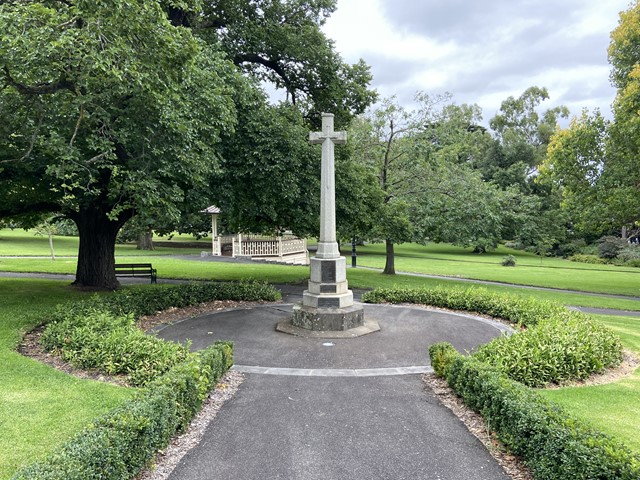
A stone cross and war memorial shrine were erected on the eastern slope of Surrey Gardens to permanently remember the men of Surrey Hills and Mont Albert who went to war. They were opened on 7 April 1918 even as men were still fighting in World War I.
Surrey Gardens Shrine
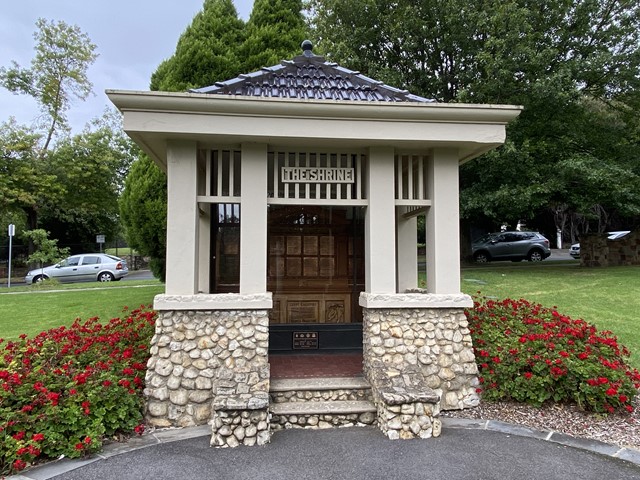
Also in Surrey Gardens, this bungalow style shrine was designed by John Stevens Gawler and contains an honour roll carved by Surrey Hills resident J. K. Blogg. Carved from Indian teak and Australian white mahogany the honour roll is adorned with gum leaves, wattle blossoms and a boomerang to represent those who did and did not return. Both Gawler and Blogg donated their services for this project.
New panels recording extra names researched by local resident Sandra Dexter,were added for the shrine's 100th anniversary restoration in 2018.
Surrey Gardens Established in 1903, Surrey Gardens were laid out in the English Landscape style, featuring winding paths and deep shrub borders in keeping with garden fashion in the Federation era.
In 1912 a Chinoiserie bandstand, dedicated to local community figure John Gray, was built and used for community meetings and music recitals. It was removed in 1973, however a plaque marking its original site remains.
A shrine commemorating the Great War was erected in 1917 by the citizens of Mont Albert and Surrey Hills. One of the earliest WWI shrines in Victoria, it contains a beautiful carved timber panel featuring native flora for the roll of honour, created by J. K. Blogg who lived locally. A memorial plaque and granite pillar were also installed in remembrance in 1921.
Cannons dating from 1843 were moved from the Canterbury Sports Ground to this site in 1919. A bluestone drinking fountain was installed in 1930, and a stone cairn and plaque in the 1930's to commemorate Cr. Albert Ernest Vines. The Baby Health Centre opened in 1930 and the beautiful stone entrance to the gardens was installed in 1950 in honour of Cr. Dimmick.
Several significant trees grace this park, including several mature Cupressus macrocarpa, an outstanding Eucalyptus citriodora, some fine Elms and Oaks, including a Quercus acutissima (Japanese Oak).
Beckett Park Soldiers Memorial
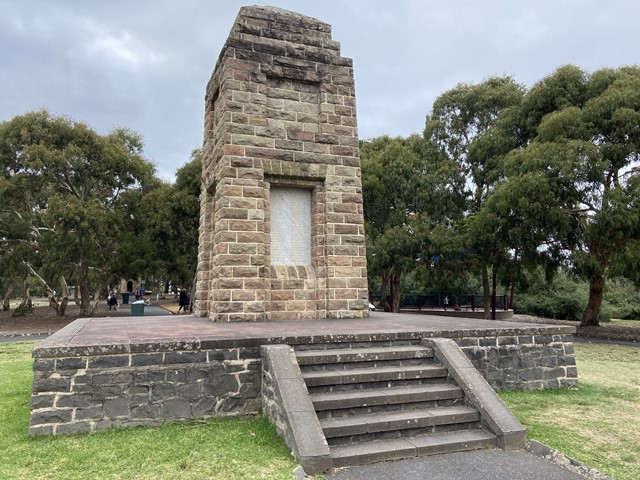
Located at the apex of Beckett Park, the Balwyn War Memorial was designed by Mr. Edwin Le Leu, a Balwyn builder and contractor and officially opened on 24th May 1919.
Made of marble and concrete, the monument was faced with stone from Briagalong in 1936. Like the Surrey Gardens shrine, the list of names inscribed on the monument was found to be incomplete, and 28 names were added in the years after its opening. Today the names of 176 soldiers and nurses are on the memorial.
Kew Cenotaph
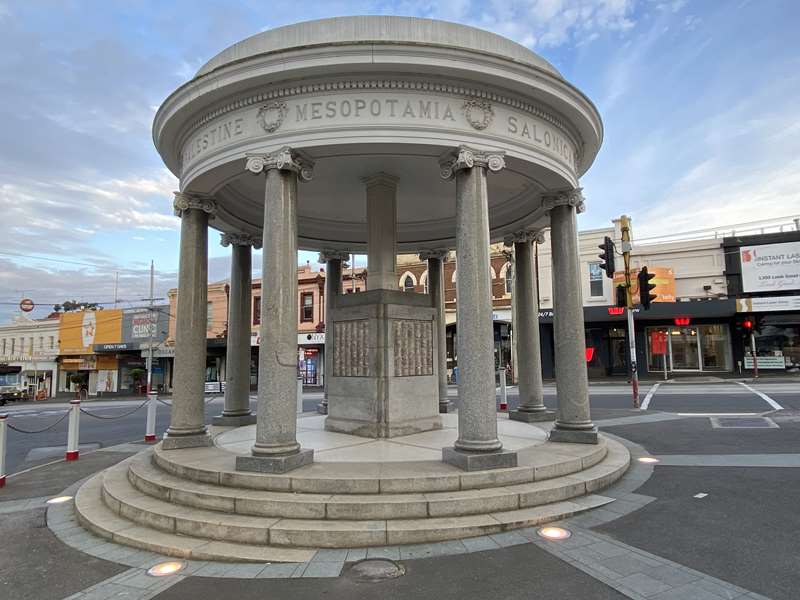
Located near Kew junction shopping precinct in the junction of High Street and Cotham Road, the Kew Cenotaph was designed by former Mayor of Kew and notable architect Harry W. Tompkins. Built from granite and marble in a classical style, the memorial was opened in 1925 before a crowd of five thousand people.
The Kew Cenotaph was added to the Victorian Heritage Register in 2004 for its architectural, historical and social significance to the State of Victoria. It is still used as a gathering place for ANZAC Day ceremonies today.
Hawthorn War Memorial in St James Park
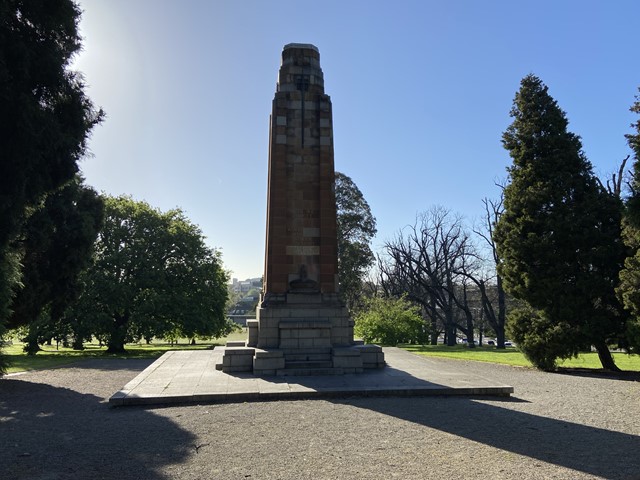
The City of Hawthorn invited designs from returned soldiers for a memorial. Malcolm Finlayson - a former lance-corporal of the 38th battalion - submitted the winning design. Hudson & Wardrop were appointed as architects. The coloured-brick obelisk in St James Park was officially opened in 1929.
Nearby, 'Honour Avenue', the path that wraps around Bowls Club on the eastern edge of the St James Park, is the location where thirty mahogany gums were planted in 1921, marking each of the lives of Hawthorn West Primary School's ex-students lost in World War I.
Web Links
→ Boroondaras war memorials









